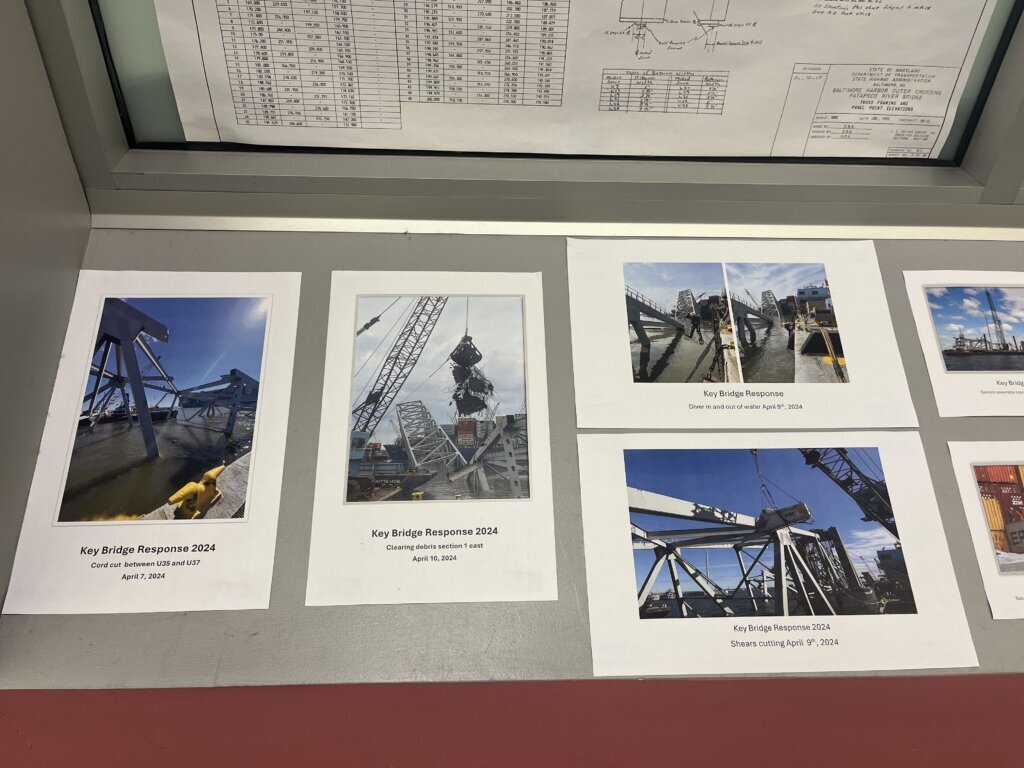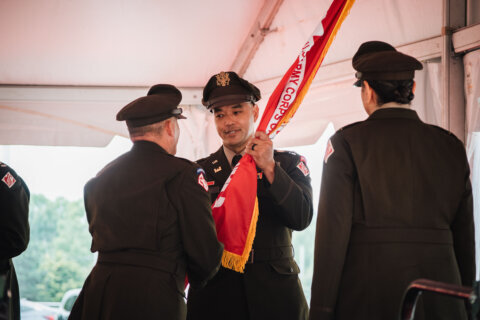The mission is daunting at the site of the deadly collapse of the Francis Scott Key Bridge in Baltimore, Maryland, as crews have to remove 50,000 tons of debris.
Nonetheless, police divers are there continuing an investigation into the collapse.
Visibility under the water is extremely poor, however.
“Best case scenario is you might be able to see eight inches in front of your face,” said Maryland State Police Cpl. Lyle German, who’s with the department’s underwater recovery team. “Worst case scenario, it’s like wearing one of those sleep masks, and you have zero visibility.”
The divers wear stainless steel helmets for protection as they swim around twisted metal and concrete.
They don’t have scuba tanks. Instead, they breath through a tube that goes right up to the surface, allowing them to stay down for as long as they need.
“We train for this,” said Maryland State Police Detective Sgt. Justin Updegraff, the commander of the underwater recovery team. “More times than not, the divers will actually close their eyes because they can’t see.”
Updegraff said the divers “move their arms left and right like a windshield wiper.”
“We train like that in a pool, putting them in blacked-out masks,” Updegraff said.
German said it’s similar to someone messing up your room, turning the lights off and then telling you to find a specific item.
And using a flashlight doesn’t help.

“Have you ever driven through a snowstorm and put your brights on?” German asked. “It doesn’t help at all — there are a lot of particulates down there.”
The Maryland State Police dive team is working alongside numerous agencies at a command center that’s been established at the cruise terminal in Baltimore where cruise ships would normally be taking vacationers out to sea.
Agencies operating out of the center include the U.S. Coast Guard, the U.S. Army Corps of Engineers and the Maryland Transportation Authority, among others.
“We work best when we’re working with our partners,” said Lt. Cmdr. Amanda Faulkner with the Coast Guard. “This is how we are meant to work — in collaboration.”
Faulkner said one of the first priorities will be to partially open the main shipping channel at the Port of Baltimore.
“That will allow us to get back up to 75% of pre-collapse operations through the waterway,” Faulkner said, adding that the hope is to get that done before the end of the month.
Crews will then need to remove bridge debris from the cargo ship, get the ship off the river and fully reopen the channel to commerce.
Officials have said all of that will likely take another month, at least.
The bridge collapsed on March 26 after being struck by the cargo ship Dali, which lost power shortly after leaving Baltimore, bound for Sri Lanka.
Those operating the ship issued a mayday alert with just enough time for police to stop traffic, but not enough to save a roadwork crew filling potholes on the bridge.
Authorities believe six workers — immigrants from Mexico, Guatemala, Honduras and El Salvador — plunged to their deaths in the Patapsco River.
The bodies of three have been recovered, but the search for the other victims continues.
More Baltimore Key Bridge collapse coverage
- The latest on the Key Bridge collapse and recovery in Baltimore
- Investigators focus on electrical system of ship in Baltimore bridge collapse
- Third channel to open at Baltimore port as recovery from bridge collapse continues
- PHOTOS: Baltimore’s Francis Scott Key Bridge collapses after being struck by ship
Get breaking news and daily headlines delivered to your email inbox by signing up here.
© 2024 WTOP. All Rights Reserved. This website is not intended for users located within the European Economic Area.








